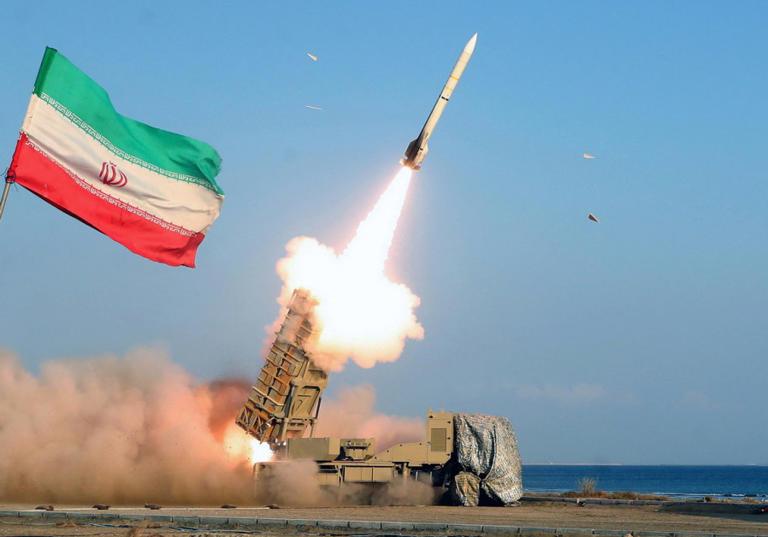
Iran to increase attacks on US by arming groups in Syria
Iran may be preparing to increase its attacks on US forces in Syria using “powerful armor-piercing roadside bombs,” according to a report at The Washington Post that is based on “classified intelligence reports.”
The report says that the Islamic Republican Guard Corps Quds Force oversaw “testing of one of the explosives, which reportedly sliced through a tank’s armored plating in a trial run conducted in late January in Dumayr, east of Damascus, the Syrian capital, according to one of the intelligence reports.”
The intelligence reports are part of the documents that were leaked on the messaging platform Discord. “One apparent attempt to use such devices against US forces was apparently thwarted in late February when three bombs were seized by US-allied Kurdish fighters in northeastern Syria,” the report noted.
Explosive devices being transported by local proxy of IRGC
The US-backed Syrian Democratic Forces interdicted some of these explosive devices that were apparently being transported by a local proxy of the IRGC. This incident happened near Rumeilan in northeast Syria.
The US-backed Syrian Democratic Forces interdicted some of these explosive devices that were apparently being transported by a local proxy of the IRGC. This incident happened near Rumeilan in northeast Syria.
The reports about Iran’s possible decision to escalate in Syria, or at least change the method of its attacks, comes as Turkey’s pro-government media has also alleged that the US has sent the High Mobility Artillery Rocket System to Syria. Turkey’s pro-government Daily Sabah alleged that the “US sends HIMARS to YPG/PKK terrorists in northern Syria.”
Ankara claims the US-backed Syrian Democratic Forces are actually the “YPG” and that these are “terrorists.” Over the last several years Turkey has used armed drones to target and kill members of the SDF who work with the US. Some of these attacks have harmed civilians.
This puts the US in an awkward position in Syria. Turkey is a member of NATO but opposes the American presence in Syria, accusing the US of working with “terrorists.”
Meanwhile, the Iranian IRGC, which the US views as a terrorist group, works with proxies to target American forces in Syria. In addition, the Turkey-backed Syrian rebels near Tel Tamr often target the SDF and areas where the US may operate. Iranian-backed groups and Russians sometimes harass the US in Syria.
In addition, Al-Arabiya reported that “Russian forces operating in Syria on Wednesday accused US military pilots of ‘gross violations’ of protocols designed to avoid clashes between the two superpowers,” quoting RIA news agency. This means that Russia may also be upping pressure on the US in Syria.
Iranian backed proxies in Syria have carried out more than 70 attacks against US forces there since 2021. In most of these incidents, rockets have been fired at the forces along the Euphrates River Valley, or drones have been used. Washington has retaliated for some of these attacks, which result in no injuries and are designed to harass American forces. There are only around 1,000 US personnel in Syria, concentrated in several locations, such as around Omar and Conoco fields near the Euphrates River.
Eastern Syria may now be in the crosshairs of Turkey, Russia and Iran, each hoping to get the US to leave. In the wake of Turkey’s elections, Ankara may think it has leverage. Also, rumors that Moscow may be drawing down forces in some areas could embolden Tehran.
If the US has sent HIMARs to Syria, this could represent a way to bolster the thin line of US troops there. The SDF, although they have tens of thousands of fighters, are generally lightly armed.
By contrast, the Iranian-backed militias have drones and Russia and Turkey have more significant forces. Syria’s regime recently rejoined the Arab League, further complicating issues in the war-torn country.
Israel has also opposed Iran’s entrenchment in Syria. If Iran is seeking to use IEDs in Syria, this could be part of a wider Iranian plan to use IED and new types of roadside bombs in the region. This could also have implications for Iranian-backed proxies such as Palestinian Islamic Jihad and Hezbollah.
In order to plant IEDs in eastern Syria to target US forces, the Iranian-backed militias would have to cross the Euphrates or infiltrate into Kurdish areas using Syrian regime forces as cover, which will be difficult for the Iranian-backed proxies who may have difficulty operating openly in areas where the SDF is present. By contrast, using rockets and drones is an easier method for the Iranians.
Source: msn





